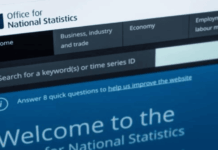How Much Credit Card Debt Do Americans Have?
Total U.S. Credit Card Debt (in billions)
Overall, total U.S. credit card debt is on the rise. During most of 2013 and 2014, total American credit card debt floated around the mid-$600 billion range. That total eclipsed $700 billion in early 2015 and surpassed the $800 billion mark in late 2017.
While total credit card debt experienced a downward turn in the first quarter of 2018 (down $20 billion from the end of 2017), the upward swing in total accrued credit card debt appears to be unaffected. Expect a continuation of this trend throughout the rest of 2018 and beyond, as credit card use becomes more widespread.
Average Household Credit Card Debt vs. Other Kinds of Debt
As a percentage of household debt, credit card debt remains low. Mortgages make up most of American household debt, and U.S. citizens, on average, hold more student loan and auto debt than they do credit card debt. To that end, credit card debt remains a small, but important, part of the average American’s household debt.
While interest rates tend to be higher for credit cards than for mortgages, auto loans or student loans, credit card debt is unsecured and flexible, with most Americans using cards for everyday purchases rather than large, lifelong investments such as cars and homes.
Why Do Americans Take on Credit Card Debt?
For the most part, Americans take on credit card debt in order to spend more than they can afford on unnecessary purchases – according to a survey conducted by Nerdwallet, almost half of all credit card spending happens when consumers attempt to spend above their means.
However, when Americans aren’t spending unnecessarily, most credit card debt is accrued to pay for non-medical emergency services, or necessities they cannot afford with their household income. Unemployment, travel expenses, and personal medical emergencies are also major credit card expenses for most Americans.
Only a very small percentage use credit cards for cash advances.
What does this mean for Americans? Apart from the telling percentage of people overspending on unnecessary purchases, the rest of these debt factors are important, necessary parts of American life.
The growing cost of living in America, as well as skyrocketing health care costs, have seemingly contributed heavily to the accumulation of unsecured credit card debt in the American populace.
While income is growing in America, it has failed to outpace the growth of costs in medical expenses, food, housing and other major expenditures, leading to greater credit card debt growth in those areas.
Credit Card Debt by Age Group
While most Americans of all age groups have some credit card debt in some form or another, Americans aged 45 to 54 have the most, with more than $9,000 in credit card debt on average. If they are slightly younger (35 to 44) or older (55 to 64), they are more likely to have slightly over $8,000.
Americans older than 65 tend to see their credit card debt decrease with age, with Americans 75 and over having less than $6,000 on average – the same as credit card holders under the age of 35.
There are a number of reasons for this parabolic treatment of credit card debt. Credit card holders younger than 35 tend to have much younger credit, with lower scores and lesser ability to spend.
As people enter their thirties, they’re more likely to begin performing the kinds of events that lead to larger accumulations of debt, such as weddings and buying homes, etc. This coincides with a similar increase in credit card debt. This debt stays with them throughout their adult lives as they work to pay it off.
Once Americans enter retirement age, however, they tend to have worked off a larger proportion of their debt and live within more modest means. This leads to the lower average debt rates among older people.
Credit Card Debt by Income
Predictably, research indicates that the larger the average American’s income, the greater their credit card debt. For Americans earning more than $160,000 a year, the average credit card debt runs more than $11,000, while Americans earning between $115,000 and $159,999 keep around $8,300 in debt.
These numbers decrease with each major income bracket, with those earning less than $25,000 a year having just $3,000 in credit card debt. However, on average the regular middle-class American appears to keep around $5,000 in credit card debt at any given time.
While it may seem counterintuitive to have more credit card debt if you make more money, these statistics still indicate a healthy debt-to-income ratio for Americans in higher income brackets. Creditors are more likely to grant higher credit limits to people with larger incomes, which means they are better able to build up larger credit balances without lowering their FICO scores.
Conversely, the lower the income of the average American, the lower their credit score is; consequently, they have less credit to work with. While $11,000 may be a small amount of a wealthy American’s overall credit, $3,000 may be a much higher percentage of a low-income American’s credit limit and may be more difficult to pay off.
How Do People Feel About Paying Off Credit Card Balances Each Month?
When asked whether or not they agreed that they paid off their credit card balance each month, a majority of Americans — about 66% — either agreed completely or somewhat agreed. Just 12.5% disagreed.
This is fortunate news, given the overarching sentiment among credit card experts that the best way to utilize your credit is to pay off your balances each month. While some believe that you need to build credit by keeping a balance on your cards from month to month, this is just a myth; paying your credit card bill on time is the most effective means by which to build credit.
Generally speaking, it is not recommended to carry a balance on your credit cards, given the high interest rates such cards typically hold. If credit card holders keep a balance on their cards without paying them off, the ensuing interest can far outweigh and perceived increase in their credit rating they may experience.
For people with credit card debt who cannot afford to pay their balance each month, it is recommended to get a balance transfer card, one with a 0% APR introductory period – this will allow them time to pay off their balances without accruing interest.
Source: https://www.moneymunk.com
Disclaimer: We at Prepare for Change (PFC) bring you information that is not offered by the mainstream news, and therefore may seem controversial. The opinions, views, statements, and/or information we present are not necessarily promoted, endorsed, espoused, or agreed to by Prepare for Change, its leadership Council, members, those who work with PFC, or those who read its content. However, they are hopefully provocative. Please use discernment! Use logical thinking, your own intuition and your own connection with Source, Spirit and Natural Laws to help you determine what is true and what is not. By sharing information and seeding dialogue, it is our goal to raise consciousness and awareness of higher truths to free us from enslavement of the matrix in this material realm.
 EN
EN FR
FR




























Often it’s not actual credit debt but interest. I just stopped paying my Wells Fargo card back. I paid every month early, and more than the minimum payment. I charged $3600. By the time I paid $4800 in payments, they raised my interest to 27% and despite higher than minimum payments, the balance never went down. After multiple negotiations with them to lower the interest rate I realized I would be paying until I was 93 years old and they would have received from me approximately $15,000 on a $3,600 debt. After their final refusal to me, I stopped payingNov 11th. This will be the only time it’s discounted. My loss of credit report report points is far less damage than financial damages